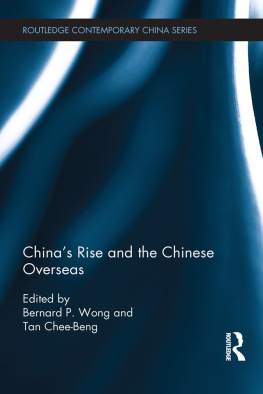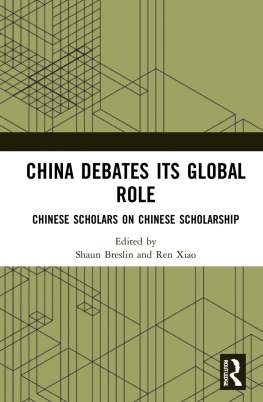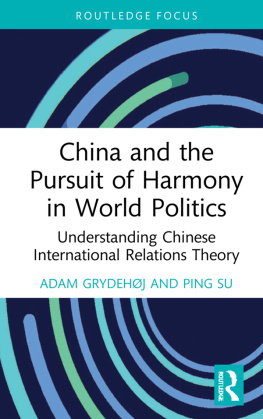PREFACE
je vous dis quil faut regarder tous les hommes comme nos frres. Quoi! mon frre le Turc? mon frre le Chinois? le Juif? le Siamois? Oui, sans doute
I tell you that we should regard all men as our brothers. What! My brother the Turk? My brother the Chinese? The Jew? The Siamese? Yes, definitely
VOLTAIRE, Trait sur la tolrance (1763)
This book addresses aspects of the representation of China and its identity, Chineseness, over the past hundred years or so. Much of the book analyses the Orientalizing and crude racist ideologies that have formed the foundations of the way white people, particularly in Britain, have both popularly and scientifically imagined China. But the book also discusses how Chinese producers of culture in China, and in exile, have imagined China, sometimes challenging and sometimes reproducing nationalist narratives of Chineseness. Thus the book considers, on the one hand, elite literary representations such as the Chinese contemporary writer Duoduos story Going Home, and, on the other, popular cultural texts including contemporary Chinese television soap serials and MTV clips. British popular cultural forms which have focussed on Chinese and China, such as the songs of George Formby and the pantomime Aladdin, also come within the purview of this book. Last, the increasing number of relevant texts to be found on the Internet are also used and critiqued. That stereotypical racist views of Chinese people remain endemic in British society is beyond question; the chapter on British cultural representations of the Chinese, Chapter Two, proves as much I believe. What is perhaps more surprising is the fact that racist references, often intended to be humorous, have been current at the highest levels of social discourse. In a recent report on the British Labour governments role in industrial arbitration in the 1970s we read that the chief spokesman of the then Secretary of State for Unemployment, Barbara Castle, would emerge from late night negotiations to announce signs of successful conciliation with the words: Gentlemen, the Chinese electrician is at work, which translated as theres a chink of light.1
While the author has no intention of denying the material, historical reality of China over the past two centuries, indeed one ambition of the book is to facilitate seeing that reality more clearly, what is emphasized in this book is the power of the social imaginary in determining the way those in the West and in China, whether white, Chinese, or hybrid, imagine and conceptualise China. There has been no single way of imagining China, for while there have been dominant ways of representing China, there have also been minority and contestatory ways of doing so. Thus, the pluralism in the title of the book: Chinas Unlimited.
The hybrid mentioned in the preceding paragraph, is intended in the sense of individuals and communities who have found themselves in mixed and in-between situations in the wake of the history of the colonialism and modernity of the past two centuries. Much of the book discusses these historical realities in terms of lived experience and the difficulty of representing that experience. The hybrid also refers to the socio-cultural practices and ways of being and expressing that have developed as a result of, and in response to these new conditions of modernity that individuals and communities have been obliged to accept. The notion of such hybridity has often been critiqued as a postmodern exculpation of colonial responsibility, and as a means of slipping into a collective amnesia that is history-free. I do not disagree with such criticisms of this postmodern re-invented hybridity. But there are cultural and human conditions that can and do only correspond to the state of hybridity, of mixity, of intermingling, of in-betweenness, of liminality, of existing at the junctions of constantly evolving and rapidly converging global histories. It is this hybrid reality that is so abhorrent to the advocates of purity, authenticity, and nationhood.






